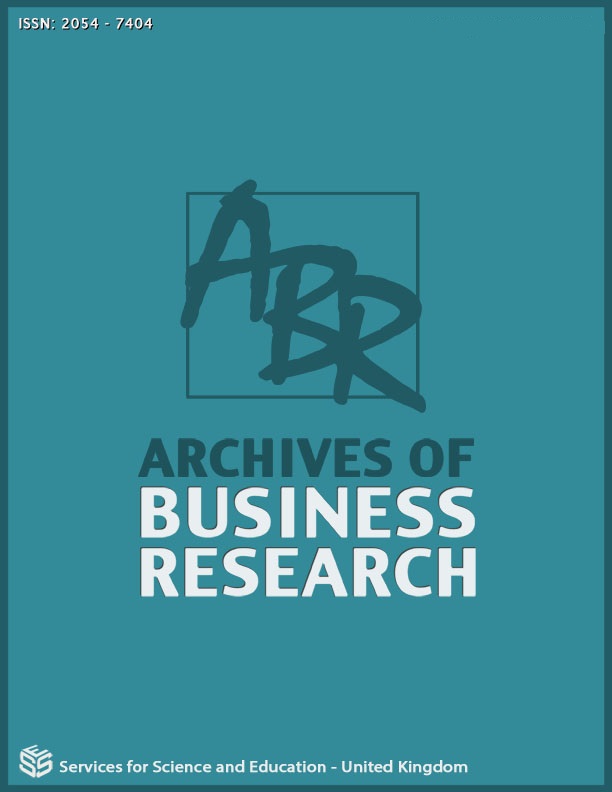Digital Marketing Adoption Between Rice Farmer and Farm Trader
DOI:
https://doi.org/10.14738/abr.1011.13540Keywords:
Adoption of digital media; Online marketing; Rice Marketing; Rice Farmers and Traders.Abstract
Rice marketing, largely, is still traditional, wherein farmers sell their products to traders, who then sell them to consumers. On the other hand, the use of digital media is fast developing in society currently. It is also growing in rice marketing. Digital media can be utilized by farmers to shift from traditional marketing channels to direct online marketing to consumers. The question is which category, i.e., farmers, or traders, can better adopt digital marketing. The purpose of this study is to compare the adoption rate of digital marketing between farmers and traders. If this adoption is higher, then there is a possibility of direct online marketing replacing the traditional ways of rice marketing. The research was conducted by surveying farmers and traders in certain rice production centers in Indonesia. The location of the research was Gantar District in Indramayu Regency, West Java province. The location was chosen because Gantar District is the highest rice producer in Indramayu Regency; furthermore, this Regency is the largest rice producer in West Java. The province of West Java is the ultimate rice producer in Indonesia. The results show that the digital media adoption of traders is higher than that of farmers. So, the possibility of a shift to online marketing from farmers to consumers is low possibility.
References
Bartlett, J. E., Kotrilk, J. W., & Higgins, C. (2001). Organizational Research: Determining Appropriate Sample Size in Survey Research. Information Technology, Learning, and Performance Journal, 19(1), 43–50.
BPS. (2021). Statistik E-Commerce 2020.
BPS Indramayu. (2020). Harvested area, Productivity, and Total Production of Paddy in Indramayu, 2017. Harvested area, Productivity, and Total Production of Paddy in Indramayu, 2017
BPS Jabar. (2020). Produksi Padi Sawah Menurut Kabupaten/Kota di Jawa Barat (Ton), 2010-2015 [Paddy Rice Production by Regency / City in West Java (Ton), 2010-2015]. https://jabar.bps.go.id/statictable/2016/10/17/136/produksi-padi-sawah-menurut-kabupaten-kota-di-jawa-barat-ton-2010-2015.html
Chaffey, D., Chadwick, F. E., Mayer, R., & Johnston, K. (2006). Internet Marketing Strategy, Implementation and Practice (Thrid Edit). Pearson Education Limited.
Feizabadi, Y. (2011). Study of Rice Marketing System in Iran. 85th Annual Conference of the Agricultural Economics Society Warwick University, 1–9.
Kaukab, E. (2021). Pemasaran Produk Berbasis Teknologi Informasi Sederhana. Fakultas Ekonomi dan Bisnis Universitas Sains Al-Qur’an Wonosobo.
Mgale, Y. J., & Yunxian, Y. (2020). Marketing efficiency and determinants of marketing channel choice by rice farmers in rural Tanzania: Evidence from Mbeya region, Tanzania. Australian Journal of Agricultural and Resource Economics, 64(4), 1239–1259. https://doi.org/10.1111/1467-8489.12380
Mukson, Setiadi, A., Pangestuti, M. D., & Prayoga, K. (2021). Factors affecting market efficiency of unhusked rice in Central Java. IOP Conference Series: Earth and Environmental Science, 759(1), 012059. https://doi.org/10.1088/1755-1315/759/1/012059
Downloads
Published
How to Cite
Issue
Section
License
Copyright (c) 2022 Yogi Makbul, Siti Herni Rochana, Deni Nugraha, Sudrajati Ratnaningtyas

This work is licensed under a Creative Commons Attribution 4.0 International License.






